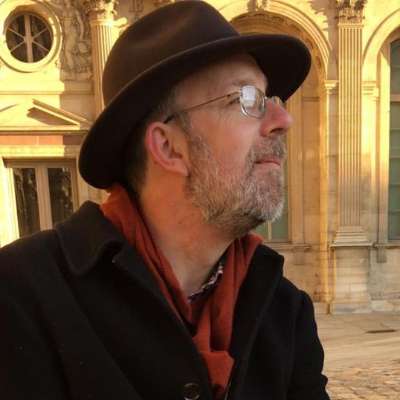Name five famous Belgians. It’s a party game likely to trip up many once they stumble past the fictional Tintin and Hercule Poirot. (Audrey Hepburn is the cute answer.)
Classical music buffs might propose violinist Eugène Ysaÿe or the composer César Franck, though the latter is only partially correct. When Franck was born in Liège in 1822, it was part of the United Kingdom of the Netherlands. Franck spent most of his life in Paris, serving as organist at the Basilique Sainte-Clotilde from 1858 until his death in 1890, and as a professor at the Paris Conservatoire from 1872. Many sources describe him as French or, at best, Franco-Belgian.
Many of Franck’s finest works were composed during the last 15 to 20 years of his life. Apart from a handful of pieces, he is generally quite neglected today. The whiff of Catholic piety in some of Franck’s music has perhaps seen it slip out of fashion, but I hope that you enjoy making a few new discoveries in this top ten selection.
1 Symphony in D minor
Once a concert hall staple, you would be lucky to Franck’s sole symphony in performance today. It was a late work, premiered a year before his death in 1890. It was written a year after Saint-Saëns' Organ Symphony and there’s a similar sense of grandeur to it, but also a good deal of joy in the finale. There are three movements, the central one starting with a lilting cor anglais theme over harp and pizzicato strings. If you like Saint-Saëns 3, you’ll love this symphony.
2 Violin Sonata in A major
This is easily Franck’s most performed work today, not least because cellists and flautists (among other instrumentalists) have stolen it to add to their recital repertoire. It is a perfumed, melodic sonata with a terrific piano part – just listen to the turbulent opening to the second movement – while the finale is dappled in late afternoon sunshine.
3 Le Chasseur maudit
Translated as The Accursed Huntsman, this 1882 symphonic poem is a slice of gothic horror that owes much to Weber and Berlioz. A Count of the Rhineland is pursued for eternity as punishment for daring to go hunting on the Sabbath. The bucolic horns and tolling church bells that open this symphonic poem soon give way to a demonic chase of tremolando strings and ghoulish woodwinds.
4 Prélude, Chorale et Fugue
As an organist, Franck’s keyboard music was greatly inspired by Bach. His most popular piano work is this mighty piece in cyclical form: each of the three sections features a recurring theme which first appears as a recitative in the Prélude, then in the transitional passage preceding the Chorale statement, and finally in the subject of the Fugue itself. The piece concludes with all three sections’ themes and textures combining, in a climax of remarkable virtuosity.
5 Piano Quintet in F minor
Franck’s Piano Quintet was another work composed in the final fruitful period of his life, premiered in 1880 by the Marsick Quartet with Camille Saint-Saëns (the dedicatee) at the piano. It’s another work that demonstrates Franck’s cyclical style: a motto theme features 18 times in the first movement and recurs in the other two movements.
6 Three Chorales for Organ
Franck said to his pupil Pierre de Bréville, “Before I die, I am going to write some organ chorales, just as Bach did but on quite a different plan.” He left it late. His three Chorales, regarded by organists as Franck’s great legacy, were composed in the summer of 1890, but he died before he had the chance to register them on the Cavaillé-Coll organ (where he was organist) and they were published posthumously. Here, poignantly, they are played on the organ of Notre-Dame de Paris by titular organist Olivier Latry.
7 Symphonic Variations
Franck’s Symphonic Variations for piano and orchestra is rarely performed in the concert hall, but will be familiar to British balletomanes as it was choreographed by Sir Frederick Ashton in 1946 and is still in the repertoire of The Royal Ballet. It’s a brooding work, sounding not unlike the middle movement of Beethoven’s Fourth Piano Concerto, and is entirely based on two themes, but these continually evolve with a sense of fantasy.
Here are Marianela Núñez and Vadim Muntagirov dancing an excerpt from Ashton’s ballet:
8 Psyché
Psyché was a sensual subject for a composer devoted to religion like Franck to set. This massive symphonic poem (nearly 50 minutes) is based on the Greek myth of Psyche and Eros and features a chorus (no basses). The goddess Aphrodite is jealous of the beauty of the mortal Psyché, and persuades her son Eros to cast a spell so that nobody will fall in love with her. Eros shoots his arrow but, clumsily, wounds himself instead and falls in love with Psyché. Being mortal, Psyché must not look upon Eros’ face… but she does, of course, and punishments and struggles follow, eventually resolved when they are united in eternal marriage by Zeus.
9 Panis angelicus
Using the text of the Matins hymn for Corpus Christi, Panis Angelicus is one of Franck’s most popular melodies, yet many people don’t realise that Franck was the composer. It has been recorded hundreds of times, but is part of a larger work, the Messe à trois voix. It is often sung by a tenor soloist, here the great Luciano Pavarotti:
10 Hulda
Here is a fairly recent discovery. One of Franck’s four operas (rarely, if ever, performed), Hulda is a romantic tragedy, a bloody tale of murder, love, revenge and suicide set in the Viking-era Norway. Thankfully, the opera has been revived and recorded and it turns out to be a terrific piece. Here is a brief taste:
Appropriately, Hulda was performed in concert in Franck's home city of Liège this year to mark the composer's bicentenary. Let’s hope it gets staged soon.




